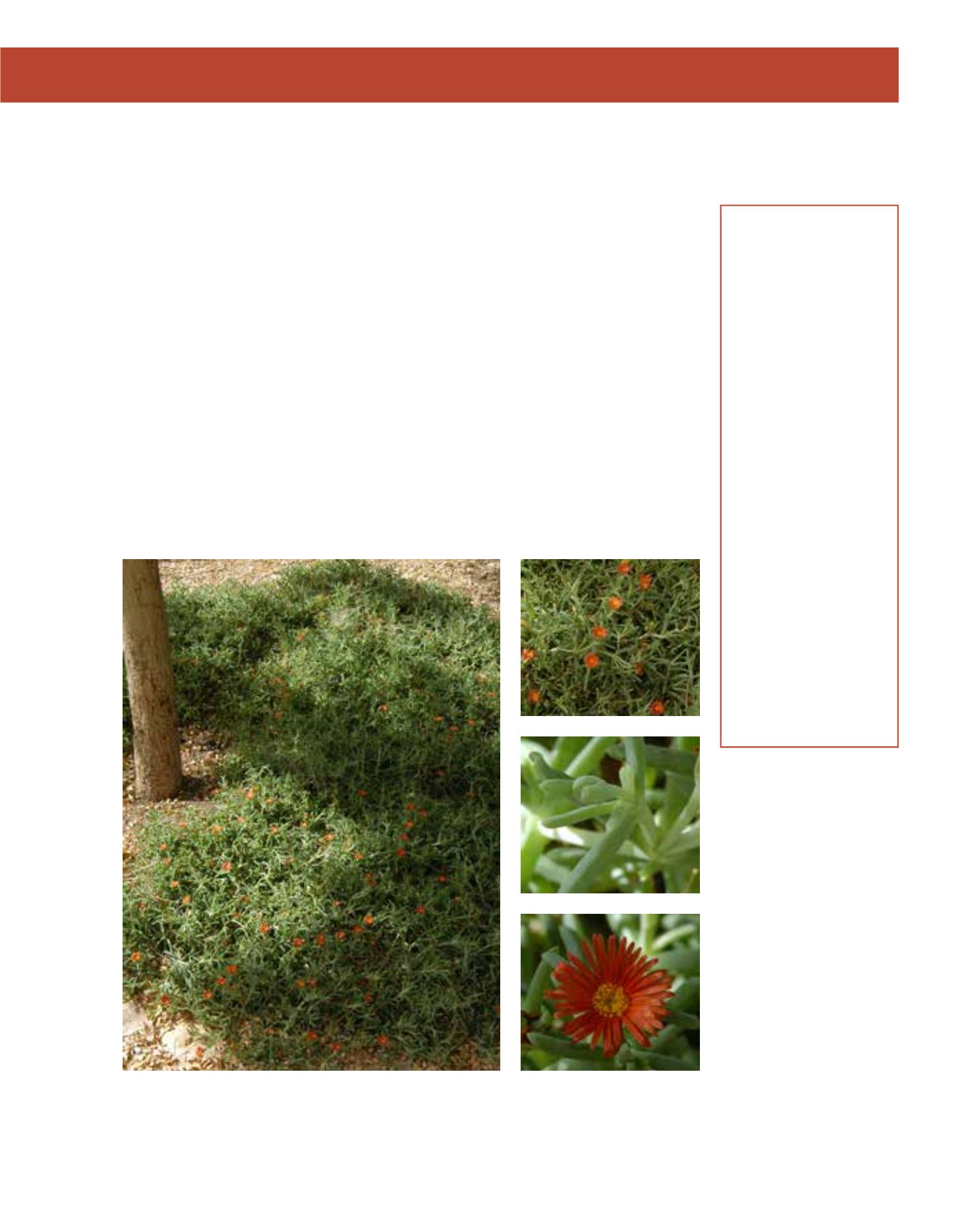

GENERAL
Origin
:
Mediterranean,
sub-tropical
Vigour
:
fast growing
Humidity
:
very arid, semi-
arid, semi-humid,
very humid
Propagation :
sowing and
pricking out,
cuttings
Maintenance :
low
CONDITIONS
Urban climate :
resistant
Dessication :
resistant
Stagnant water :
vulnerable
Irrigation
:
low
Salinity/ppm :
high (3500 ppm)
Hardiness
:
-3°C
SHAPE
Type
:
cacti, succulents
Height
:
0.15 m-0.5 m
Spread
:
0.4 m-0.6 m
Foliage
:
evergreen
FLOWER
Colour
:
bright orange
Size
:
5 cm - 6 cm
Period
:
May - August
FRUIT
Type of fruit :
capsule
Fruit size
:
0.5 cm
Toxicity
:
inedible
This sturdy plant originates from the Western Cape region, South Africa. Gold Ice Plants are
small shrubs with succulent leaves arranged in pairs. In ideal conditions, they can grow up to 50
cm high, but they usually form low mats of some 15 cm. The foliage is dark green, but turns pale
bluish-green in drought and may reach 5 cm in length. During its flowering period, the entire
plant is covered with bright-orange, daisy-like flowers borne in stalked clusters or single, each
measuring some 5 cm across. They close at night and will not open unless bright sunlight induces
them to do so. Accordingly, they are also known as Midday Plants or Municipal Workers, because
the inflorescences open at 9 in the morning and close at 5 in the afternoon. Flowers appear from
late spring until early autumn, after pollination by insects, they are followed by capsules. An
adaptation to desert conditions is a mechanism that seeds are not released from the capsules be-
fore it rains, even if this takes several months. Seeds are produced in abundance and are an easy
method for multiplying the plants. Another method of propagation is to take cuttings in autumn.
The plant grows well in sand or loam, but does not tolerate waterlogging. By virtue of the leaves’
capacity to store water, established plants do well with little supplemental irrigation. Watering
may be done with medium levels of salt. Gold Ice Plants are suitable for large groundcover areas
and containers. In Arriyadh, they withstand the harsh conditions of hot sun and winter cold very
well.
180
Lampranthus aureus,
Aizoaceae
Gold Ice Plant,
Orange Ice Plant
















